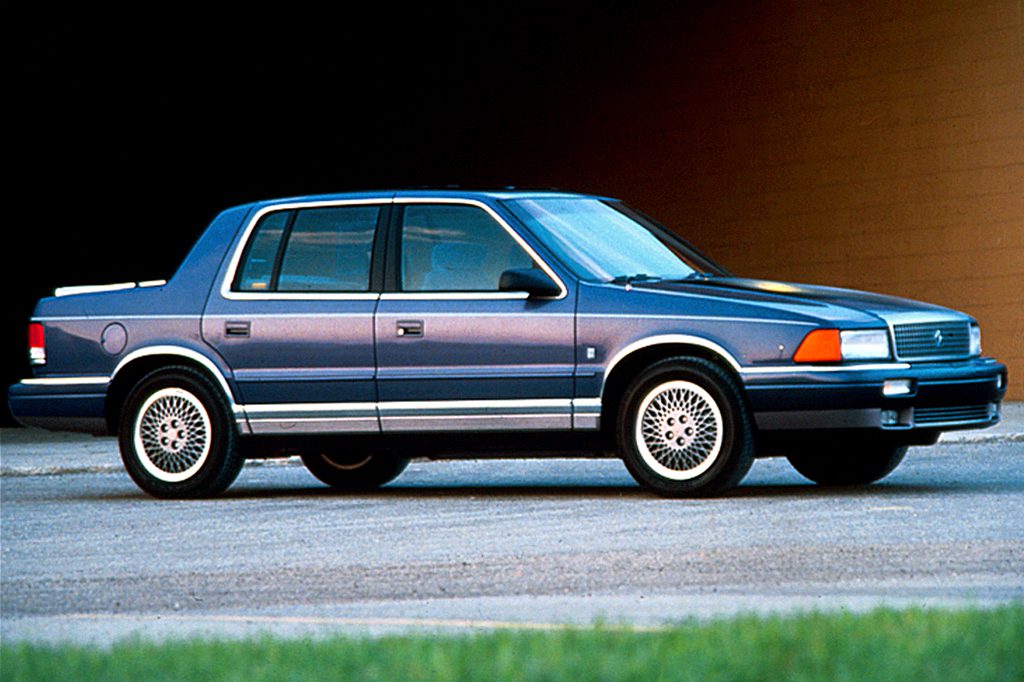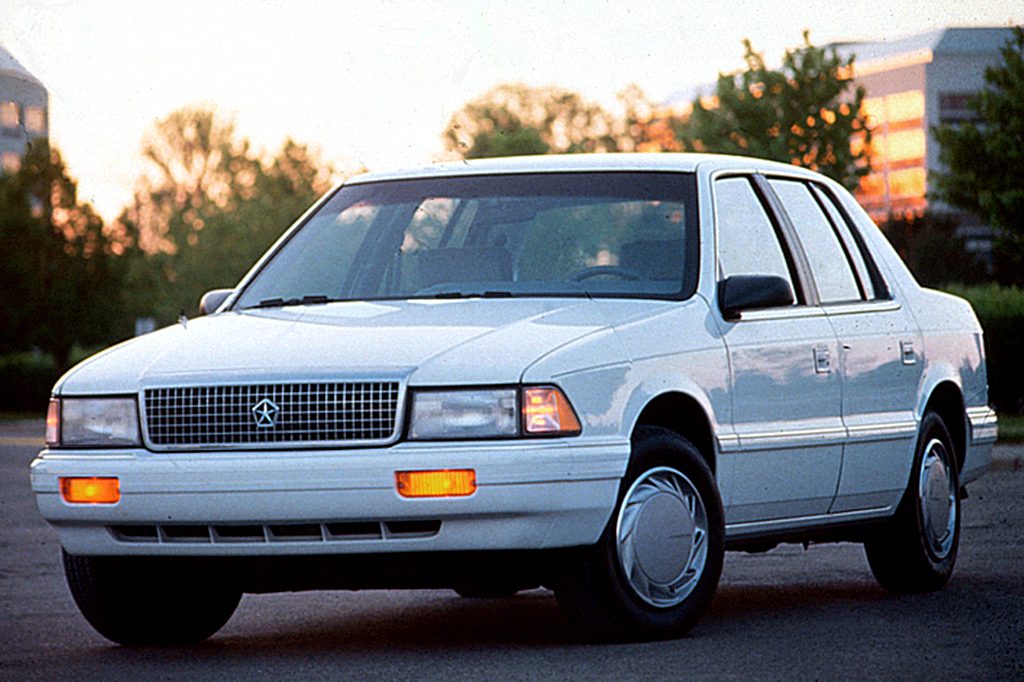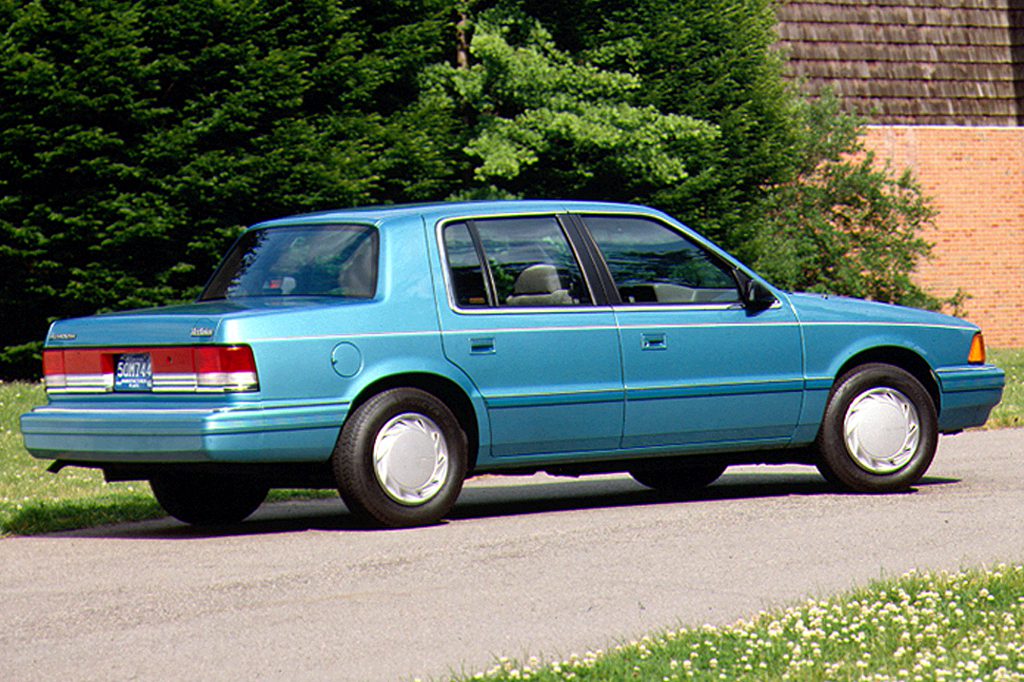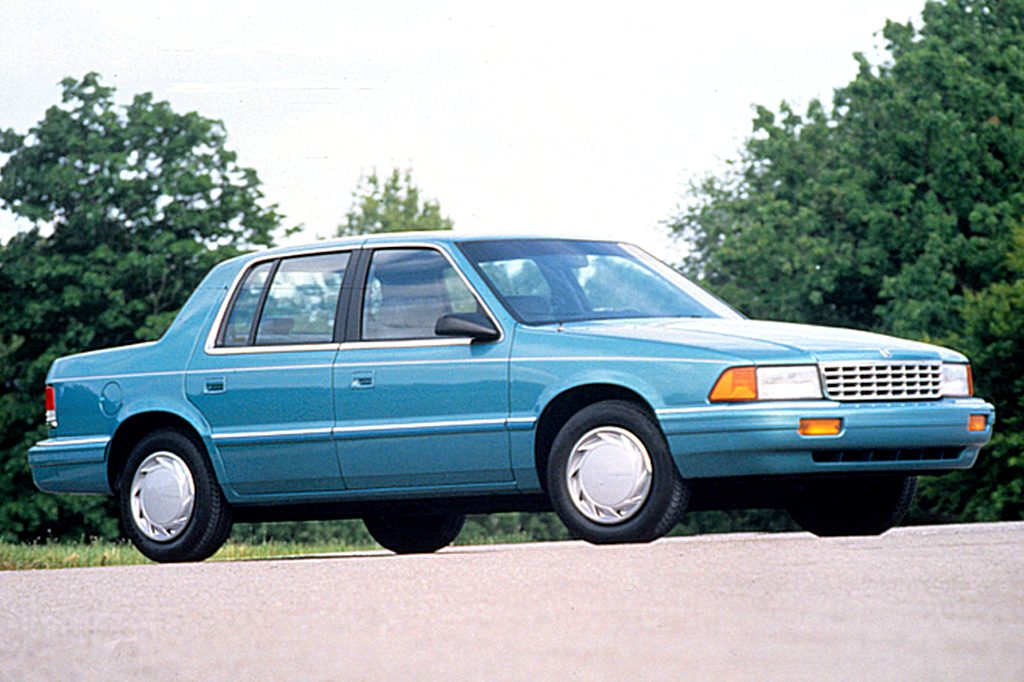| Midsize car; Built in USA |
|
|
| Good condition price range: $1,000 – $1,800* |

1990 Plymouth Acclaim

1991 Plymouth Acclaim LE

1992 Plymouth Acclaim

1993 Plymouth Acclaim

1993 Plymouth Acclaim
| Pros: |
|
| Cons: |
|
If you’re a budget-minded shopper in the market for a no-nonsense family compact, be sure to put the Acclaim on your list of must-see models.
Overview
Introduced in 1989, using many of the old K-car chassis components, Chrysler began offering a trio of new cars with similar looks. The Acclaim was nearly identical to the Dodge Spirit and Chrysler LeBaron sedan, but was the lowest-priced model of the three. Acclaim was available in base, LE, and LX trim, with base and LE models provided with Chrysler’s 100-horsepower 2.5-liter 4-cylinder and either a 5-speed manual or 3-speed automatic. Optional for the two lower models was a 150-horsepower turbocharged version of the same engine, paired with the same two transmissions. Available for the LX model was a 141-horsepower 3.0-liter V6, paired with a 4-speed automatic. For 1990, a driver-side airbag became standard and the 3.0-liter V6 was an across-the-board option.
Yearly Updates
| 1991 Acclaim Plymouth’s compact front-drive sedan gains optional antilock brakes and loses its turbocharged 2.5-liter 4-cylinder engine. |
| 1992 Acclaim The Acclaim lineup has been trimmed from three models down to one, and the optional 3.0-liter V6 can be ordered with a low-cost 3-speed automatic. |
| 1993 Acclaim Acclaim gets a new grille, with a flush pentastar hood ornament. All glass is tinted, the exhaust system goes stainless steel, and the compact disc player is a new option. |
| 1994 Acclaim Acclaim models gain a motorized shoulder belt for the front passenger, as one of the few changes made to the 1993 models. |
| 1995 Acclaim The 4-speed automatic and antilock brakes are cut from the option list in anticipation of the arrival of a new compact sedan. |
